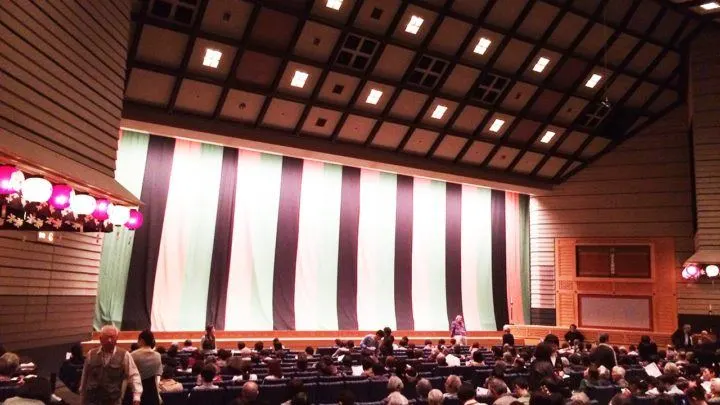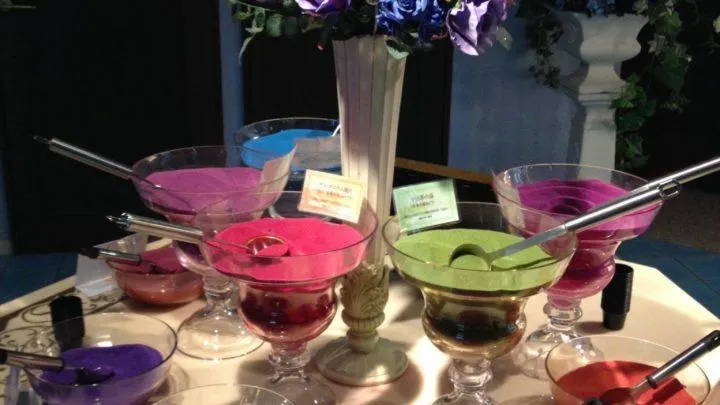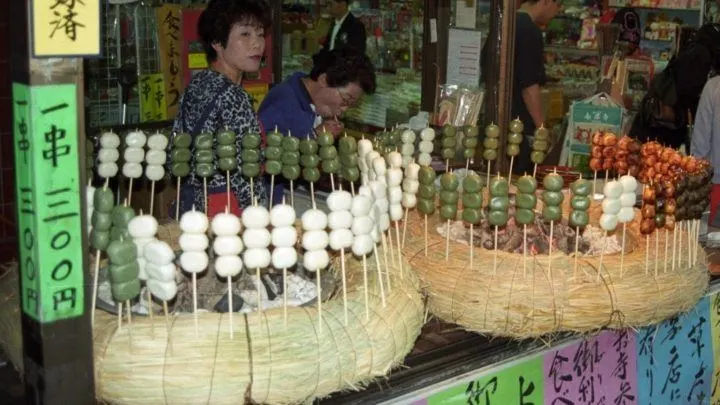Summer in Japan is full of fun, festivals, and the best food. It is hot. It is humid, but it’s still a trip of a lifetime. Check out all the great things to do, see, and of course eat!
In this article, we’ll find out all the ways to enjoy a Japanese summer:
- What is summer weather in Japan?
- What to pack for summer
- Summer Festivals
- What are the top thing to do?
- Where are the best places to go?
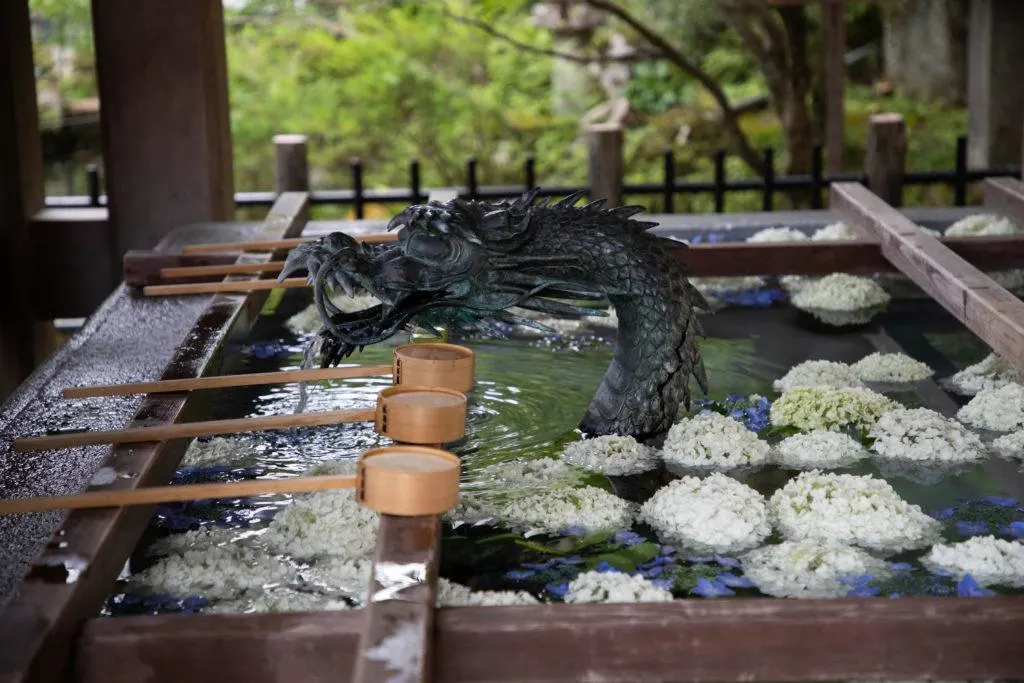
Summer in Japan
To be completely honest, summer in Japan is my least favorite season. The weather has become hot and muggy, often unbearably so. You will find yourself taking multiple showers to get some relief, but then as soon as you leave your air conditioned house or hotel room, the humidity hits you like a wet sponge and you want to turn around and live in your shower, not to come out again until October.
Mugginess aside, though, there are so many fun things to do in Japan during the summer. Baseball season hits the country at a fevered pitch and really needs to be experienced first hand to truly understand it. Fireworks dominate the summer nights, and of course there are plenty of festivals to enjoy, especially after a day at the beach.
June is the dampest month of the year, and you need to be prepared for rain. However, there are so many fun museums all over the country, like the TeamLab Planets Digital Museum or the Matsumoto City Art Museum highlighting Yayoi Kasuma’s amazing creations, that you can escape the heat and the rain, and still have a fantastic time.

When is Summer in Japan?
The official seasons in Japan are very similar to that here in the U.S. The summer months are June, July, and August. The one word that sums up a Japanese summer is “humidity.” It’s hot and humid, and there are a few ways the Japanese try to combat this as they continue to work and play.
The most common phrase I used during the summers I’ve spent in Japan is “Mushi-atsui, ne?” This means it’s a particularly humid heat, isn’t it?

What is the Weather Japan in Summer?
Summer in Japan is pretty wet. June has the most rain, and is considered the “rainy season.” Because of this, June is probably the most comfortable summer month to be outside. July and August are much more difficult. However, there are so many great things happening during the summer months, that it shouldn’t stop you from visiting.


What to Pack for Summer in Japan?
The Japanese are always looking for more ways to cool down during the summer. When you arrive, get yourself to a department store and a 100 yen store and see what types of products they will have this year. It’s always fun and surprising to see the new innovative cooling products they develop.
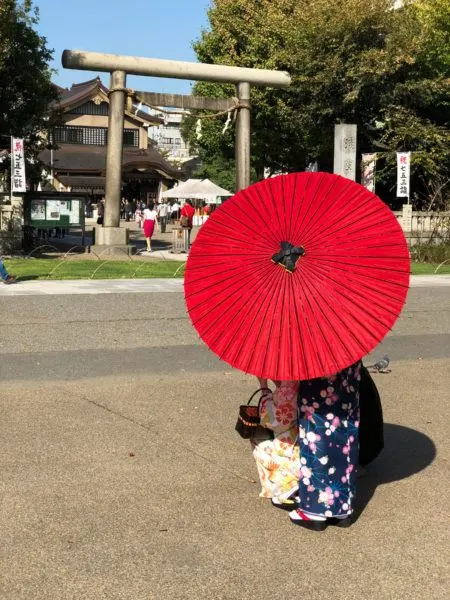
Thinking about what to wear in Japan, however, think cool! Unless you are from someplace where the heat and humidity is similar, it’s hard to prepare for it. I lived in Japan for five years altogether, and I never got used to it.

Are Japan Tourist Sites Crowded in Summer?
Japanese tourist sites are always crowded in summer. Many foreign tourists travel to Japan in summer, and that added to the domestic tourists really ramps up the number of people at any given popular site. If the attraction you want to visit is on the normal tourist path, you can bet there will be plenty of other people there. The good thing is that the Japanese are super polite, and if they see you trying to take a photo, they will patiently wait for you to do so.
Learn about how to travel in Japan post-pandemic.

Summer Festivals in Japan
Summer is one of the most popular festival seasons. No matter where you go, you will find temple celebrations, parades, and, in August, the Bon Odori dances throughout the country.
Some festivals to see are:
- Otaue Rice Planting in Osaka
- Dragon Boat Races in Yokohama
- Himeji Yukata Festival
- Tanabata Festival in Sendai
- Gion Matsuri in Kyoto
- Mitama Matsuri in Tokyo
- Tenjin Matsuri in Osaka
- Nebuta Festival in Aomori
- Tomioko Hachimangu in Tokyo
- Torii Yaki in Hakone
- Awa Odori in Tokushima
- Yanai Goldfish Lantern Festival
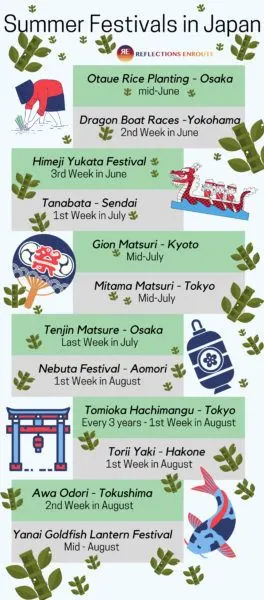
What are the Top Things to Do?
- Try a Summer Dish in Japan
- Attend a Japanese Baseball Game
- Explore the Tidepools
- Climb Mt. Fuji

Try Unagi
Unagi, freshwater eel is a Japanese dish that is served year round, but it is especially popular during the summer months because it is thought to increase stamina and heat resistance, something very useful in the hot and humid Japanese summer. As the story goes, in the Edo Period more than 200 years ago a struggling restaurant owner advertised Unagi as a stamina enhancing meal to eat during the day of the Ox (Ushi no Hi), Midsummer’s Day.
His promotion was successful and so a tradition was born to eat eel on Midsummer’s Day, by doing so it is said that you will have more stamina and endurance during the rest of the year. In more recent years a scientist was even able to prove that the richness of the eel in vitamins, calcium, and protein was stamina enhancing, and so there really is a very good reason to have some delicious Unagi in summer in Japan.
There are different ways to prepare Unagi and you will most likely find it as Unaju or Unagidon, grilled eel in a thick and sweet sauce served on rice. In my opinion, the most delicious variation of Unagi is Nagoya style Hitsumabushi.
by Lena at Nagoya Foodie
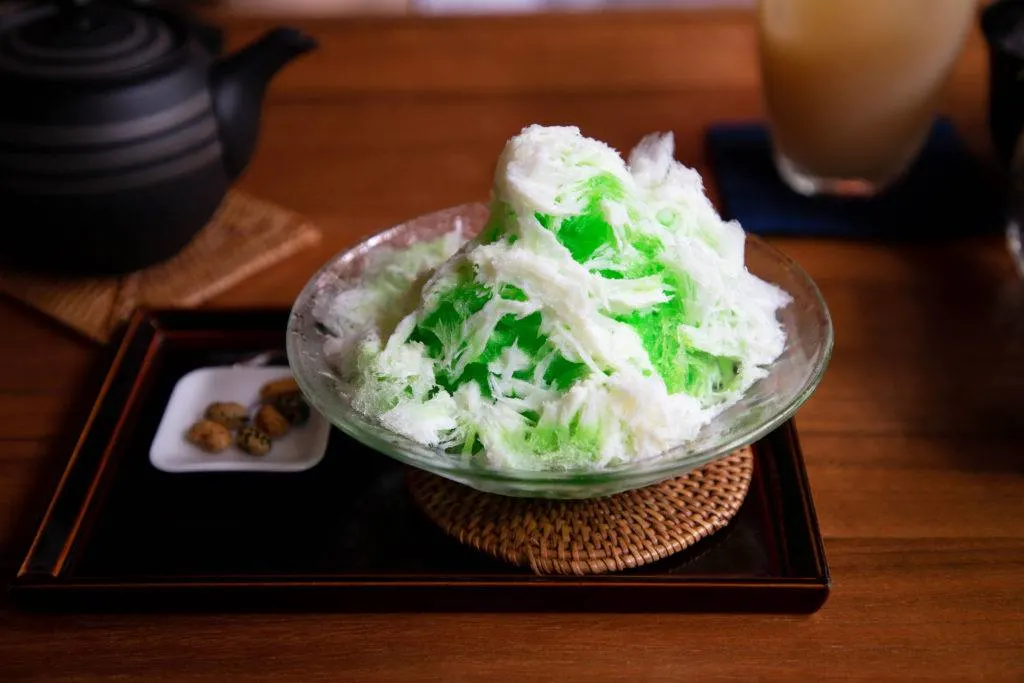
Cool Down with Kakigori
Kakigori or shaved ice is very popular throughout Japan. It comes in a variety of flavors, typically fruit. My favorites are the melon and strawberry. Unlike snow cones in the U.S., kakigori’s ice is shaved and super thin. It holds up surprisingly well in the heat, but you still have to eat it quickly.
Almost every summer festival will have kakigori stands and it is also offered in cafés and restaurants. It is an amazing snack for adults and children alike.
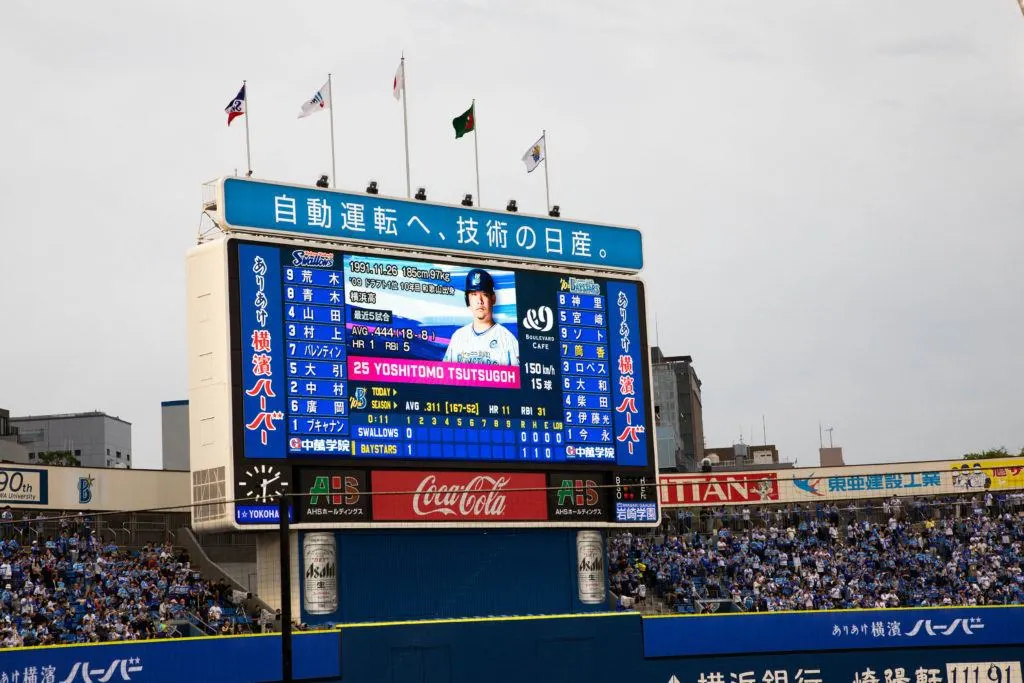
Attend a Japanese Baseball Game
Whether you are a sports fan or not, it’s well worth a trip to the stadium to catch Japan’s number one. They love baseball, and during the packed season (there’s a game almost five nights per week), the stands are jammed full with fans.
The night we went, which happened to be on women’s night, the evening started out with a gift, a team jersey, and it just got better from there. From watching the scoreboard and its shinkansen train celebrating home runs, to the songs, halftime show, and fireworks, it was like no other game I’ve ever been to. It was a blast.
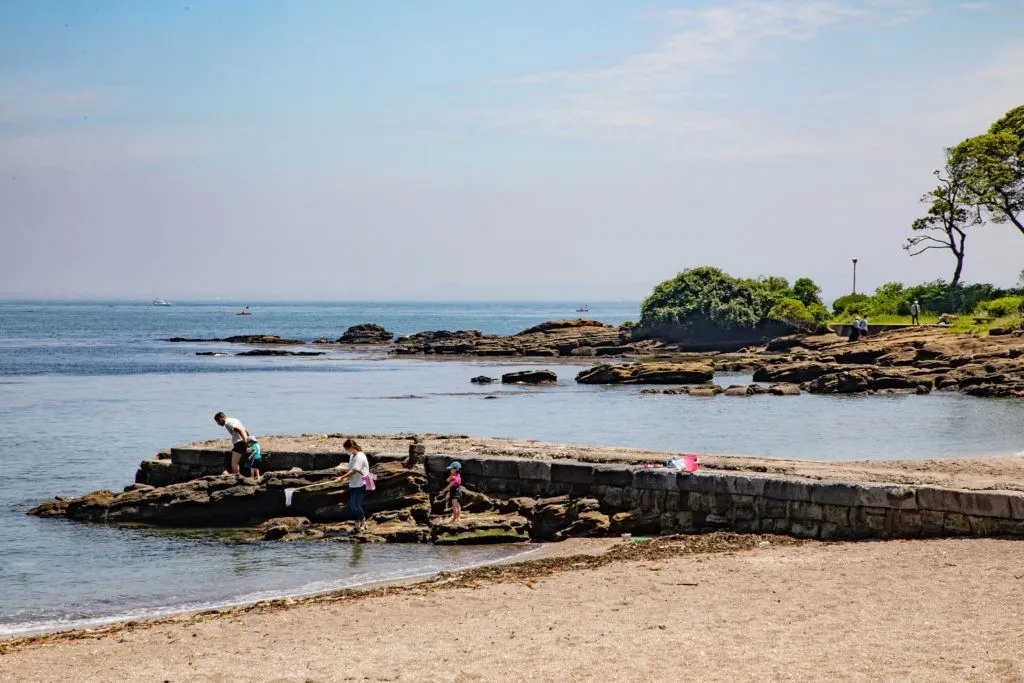
Tide Pools
With the many islands that make up Japan, there are plenty of protected coves and bays that serve you up some wonderful tide pool opportunities. Like in the photo, arm you and your kids with a good long-handled net and start looking for starfish, sea cucumbers, and more. It’s tons of fun.
The best places to go include Chotaro-ike Tide Pool in Tokyo, Kannonzaki Park in Yokosuka, Shirahama Beach on the Izu Peninsula, Senjojiki beach in Aomori Prefecture, and there are many more.
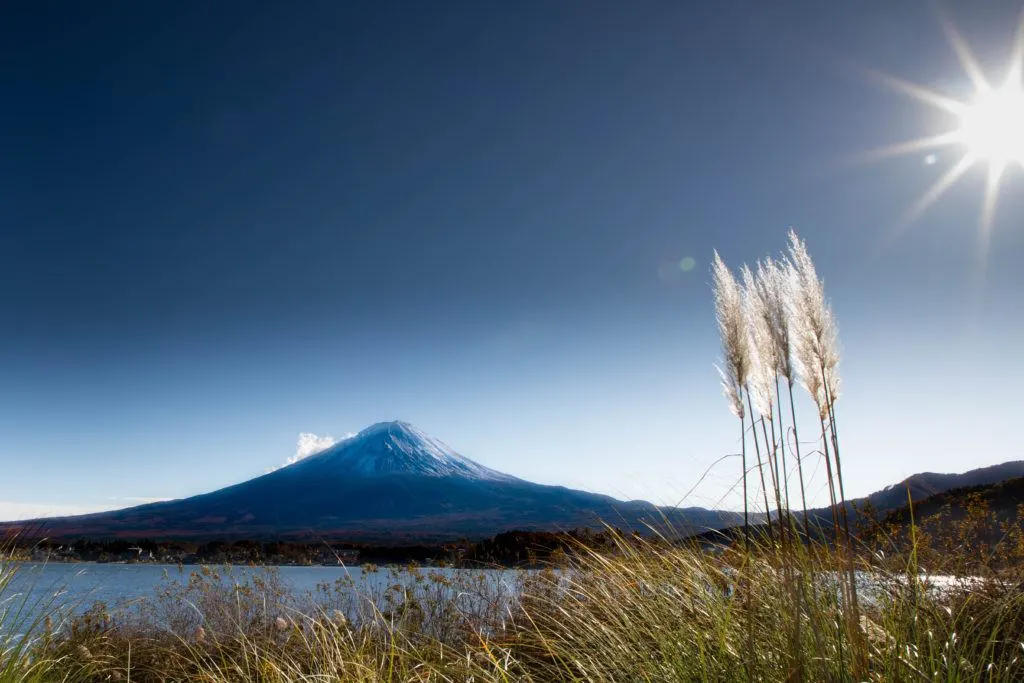
Climb Mt. Fuji
From mid-July through mid-September, in normal years, the public is able to climb Mt. Fuji. To do this, you should be in pretty good shape. One of the main reasons people climb the mountain is to awaken with the monks prayers at sunrise (around 4:00 AM).
Climbing Mt. Fuji begins at the 5th Station. Pretty quickly the trail turns upwards and much of the way is in lava gravel or pumice scree, which is exceptionally difficult to walk through. At times, you sink into it, up to your ankles, and this makes the hike even more tiring.
It’s well worth the trip, though, to see the sunrise and feel the accomplishment of climbing Japan’s tallest mountain.
What are the Best Places to Go in Summer?
Really anywhere you go in Japan during summer is going to be fun! Hot, yes. Humid, yes! Just make sure to plan on getting a hotel with a pool or near the beach. Coming back from a long walk in Tokyo and taking a dip before heading out for dinner will make you smile.

Meiji Shrine in Tokyo
The Meiji Shrine is always a good destination, regardless of season, however you are more apt to see wedding processions in the summer. Also, the shrine is located on some prime green space.
Tokyo’s sprawling metropolis gets hidden from all the parks and outdoor activities in the area, like Meiji Shrine Hobutsuden Garden and Shibafu Park, the Inner Garden and Tea House, Yoyogi Park, and even a horse park that will give children pony rides. There are also cultural buildings and museums on this prime outdoor space as well. You can easily stay in the shade and enjoy a mild summer day outdoors, right in the center of Tokyo.
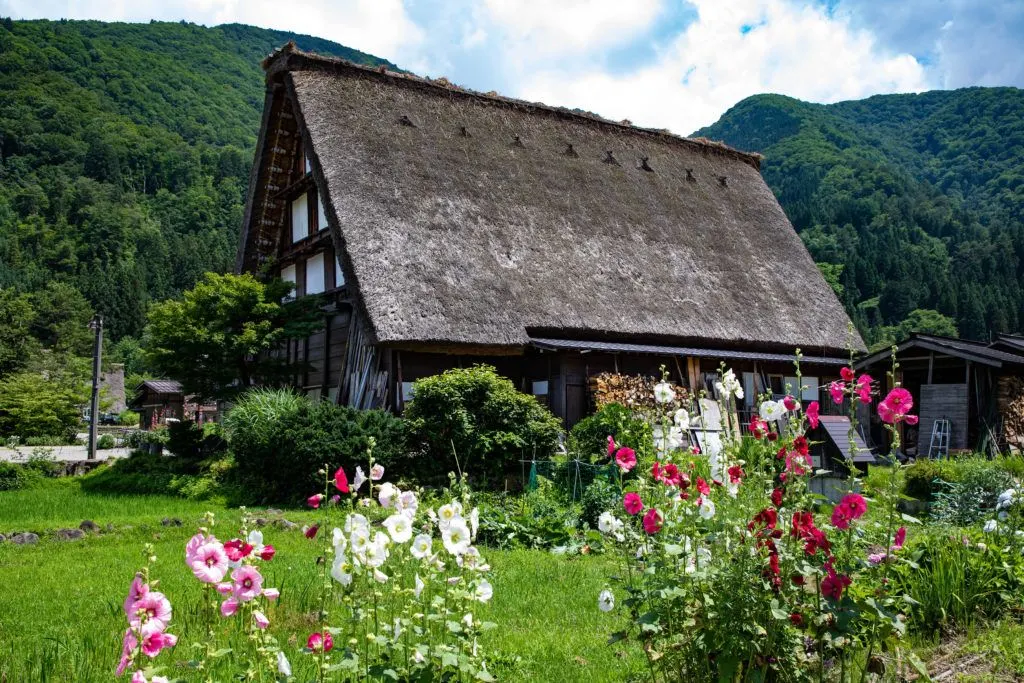
Shirakawago
The amazing traditional village of Shirakawago is full of gassho houses, with thatched roofs, is exceedingly gorgeous in summer. Everywhere you look there are vibrant flowers, that contrast so well with the dark woods of the village.
The village is also surrounded by lush rice fields in their prime. It’s the perfect place to learn about traditional Japan. Take the hike to the observatory to really get a bird’s eye view.

Koki, The Best Okinawa Beach in Summer
One summer we took a week-long stay on the beautiful island of Okinawa, In search of sun, sand and sea. Okinawa is known for its pristine beaches, so we took a road trip from the south to north of the island, stopping off at as many as possible.
As we traveled along the coast, it was clear to see that the busy season was upon us. Each beach we visited came with its own throng of tourists. Although these beaches were beautiful in every way, we were looking for somewhere to escape the crowds.
Eventually we came across Koki, a long secluded beach south of Nago City. With only a handful of families scattered along the shore, it was easy enough to find a spot to relax.
The beach has soft white sand and clear emerald-colored water that looked gorgeous with the sun shining down on it. With the sea here being mostly shallow, we took a long walk far out without the need to swim.
It was clean, simple, and quiet. The perfect place to lie on the sand and simply do nothing. We loved our time at Koki Beach, and its certainly the place for those who enjoy a relaxing chilled-out time!
By Matthew at No Hassle Travel
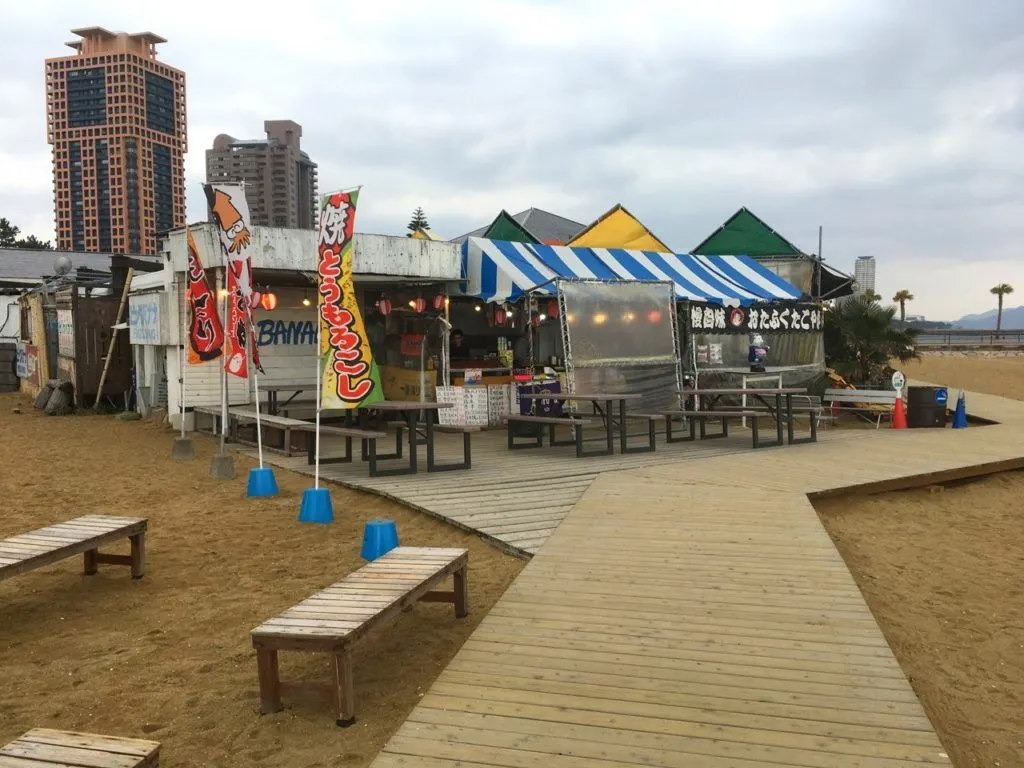
Enjoying the Sun at Momochi Beach in Fukuoka City
Okay so it’s not totally natural, but the one kilometer stretch of golden sand smack, bang in the middle of Japan’s seventh biggest city isn’t something to be sniffed at on a hot summer’s day.
We particularly love Marizon, the tiny cluster of shops at the end of the boardwalk which looks like it’s been dropped straight out of a 1960s surf movie– it’s all stripy awnings and beach chairs serving ice creams, hot dogs or seafood just screaming to be slurped down with an ice cold Asahi. Momochi Beach is also directly underneath one of Fukuoka’s main attractions, the 234m high Fukuoka Tower.
Head up there when it opens at 9.30am, then spend the rest of your morning lazing on the sand watching the world go by – with average temperatures of 27-30C in summer, Fukuoka doesn’t suffer the sweltering summer heat of cities like Tokyo.
If you have more time, a short ferry ride will take you to the pretty beaches of nearby Nokonoshima Island, or jump on the train west for an hour to investigate the pure white sands of Anego No Hama beach – this is known as the singing beach as the sand squeaks as you walk on it. There are only 20 such beaches left in Japan.
by Helen at Differentville
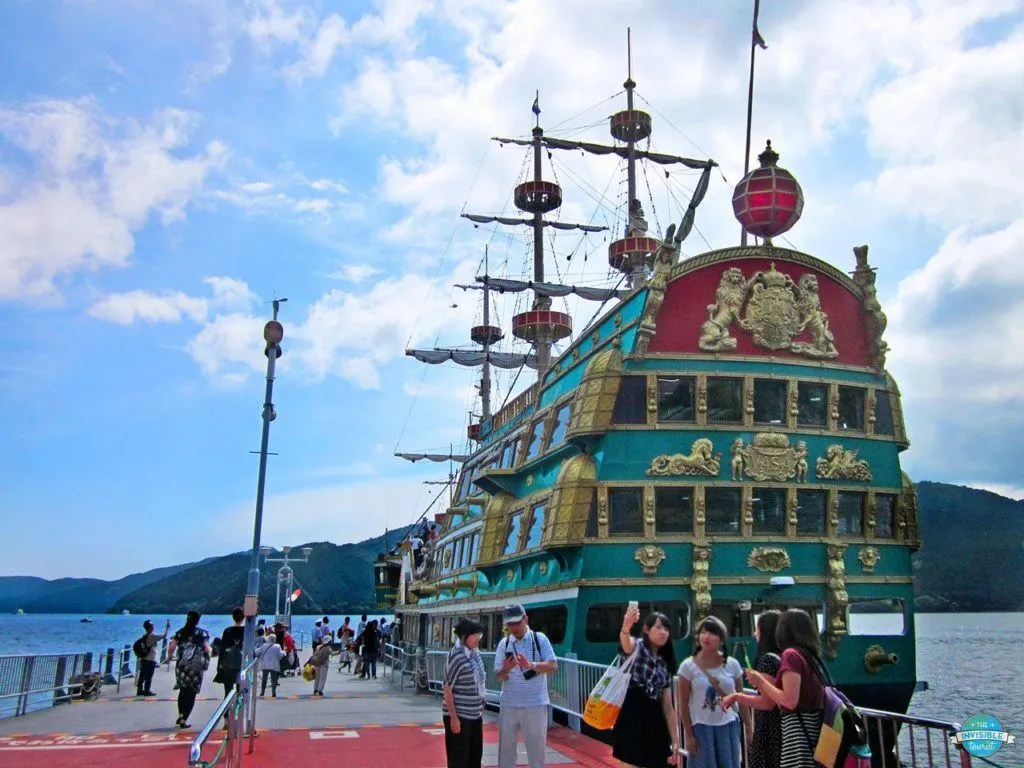
Taking a Pirate Boat Ride on Lake Ashino (Hakone)
Have you always wanted to rub shoulders with pirates whilst you sail merrily on their ship? Although this isn’t exactly Pirates of the Caribbean, sailing on a replica pirate ship is possible during the summer months in Japan and it’s really easy to include on your Tokyo itinerary.
A popular day trip from Tokyo, Lake Ashino (known more commonly as Lake Ashi) is located in Hakone and is about 1.5 hours from the country’s capital. If you’re incredibly lucky, Mt Fuji will be the picture-perfect backdrop as you sail from one side of the lake to the other with a pleasant summer breeze gently beating against your face.
Even if the warmer weather causes clouds to form around Japan’s most famous volcano rendering her invisible, it’s still a wonderful way to discover this volcanic region. Rolling emerald hills surround the lake and you’ll sail past the famous Hakone-jinja torii.
What’s more, you can have your photo taken with the ship’s captain or a cheeky pirate (although they are a plastic models!) There are currently three 18th century replica ships that sail across Lake Ashino daily for tourists. Complete with stunning wooden interiors from bygone eras, you’ll feel like you’ve been transported back in time during your journey. A cruise takes around 30 minutes, leaving port around every half-hour.
Tickets can be purchased as one-way or return, with most visitors to Hakone opting to use the popular Hakone Free Pass that covers this journey. Be sure to add a cruise on Lake Ashi during your summer visit to Tokyo!
by Alyse at The Invisible Tourist
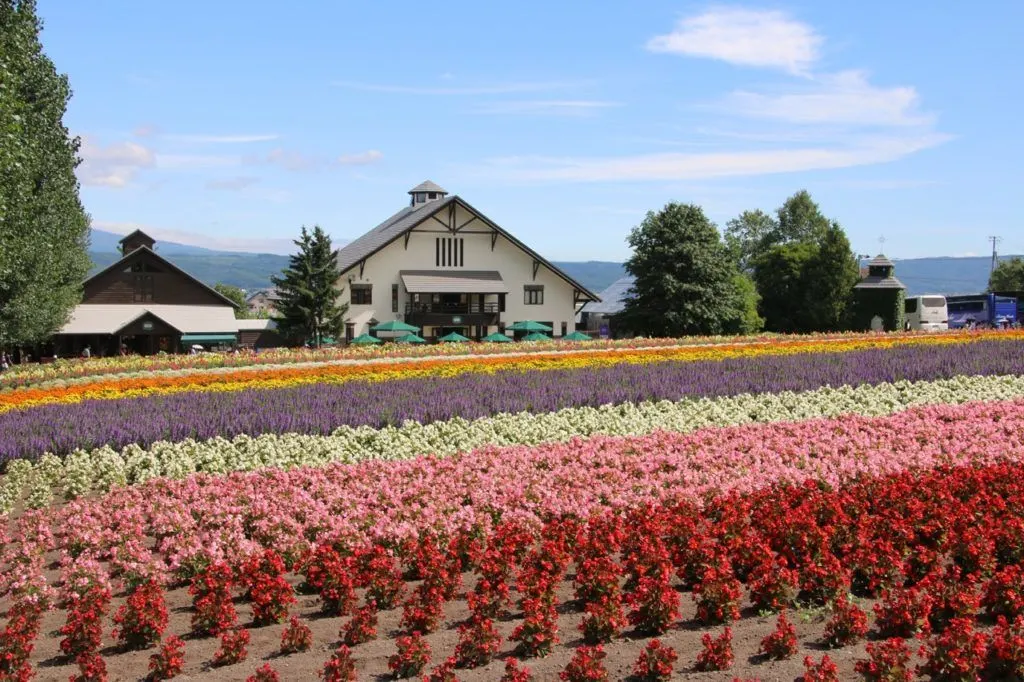
Try Lavender Fields and Ice Cream of Hokkaido
The lure of Lavender ice-cream and flower carpeted hills had us heading to explore the island of Hokkaido in Japan over Summer. The capital of Sapporo is where you leave the city on the Lavender Express for day filled with flowers, more flowers and the most delicious ice-cream you’ll ever taste!
Just like everything in Japan the flower fields are perfect and meticulously ordered. The usually green rolling hills are covered in rainbows and such a beautiful sight to see. The main flower fields are in Furano and Biei and the best way to see them is to buy a day pass for the train that gives you unlimited travel to and from the area on both train and bus.
The flower fields and farms are open from June to September with the bets viewing being in July. The bonus of this ticket is you get to visit the amazing Blue Lake as the last stop before heading back to Sapporo.
by Brownwyn at Smithsholidayroad
Conclusion
If you love the heat, fireworks, beaches, or baseball, Japan’s got it all in summer! Whether you are going to the beach, hiking in the mountains, taking great boat rides, or just checking out all the wonderful tourist spots, Japan is the place to be in summer!
Author Bio: Corinne Vail is a travel photographer, food lover, and a perpetual traveler who has been travel writing for over 14 years. For many years she lived overseas in Germany, Japan, Turkey, South Korea, and the Netherlands teaching the children of the US. military. She’s visited over 90 countries, and she’s not stopping anytime soon.

